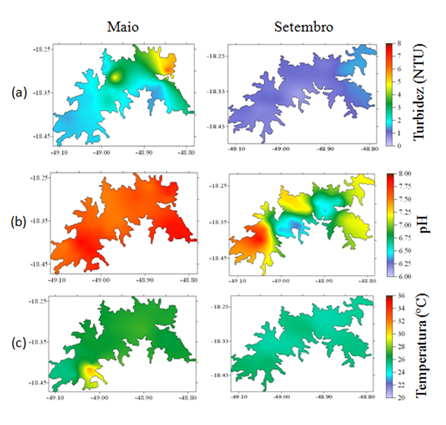Modeling of groundwater potential of the sub-basin of Siriri river, Sergipe state, Brazil, based on Geographic Information System and Remote Sensing
Keywords:
groundwater, Analytical Hierarchy Method, map, GIS
Abstract
The use of Geographic Information System (GIS) and Remote Sensing for modeling groundwater potential give support for the analysis and decision-making processes about water resource management in watersheds. The objective of this work consisted in modeling the groundwater water potential of Siriri river sub-basin, Sergipe state, based on its natural environment (soil, land use, slope, drainage density, lineament density, rainfall and geology) using Remote Sensing and Geographic Information System as an integration environment. The groundwater potential map was done using digital image processing procedures of ENVI 4.4 software and map algebra of ArcGIS 9.3®. The Analytical Hierarchy Method was used for modeling the weights definition of the different criteria (maps). Loads and weights of the different classes were assigned to each map according to their influence on the overall objective of the work. The integration of these maps in a GIS environment and the AHP technique application allowed the development of the groundwater potential map in five classes: very low, low, moderate, high, very high. The average flow rates of wells confirm the potential of aquifers Sapucari, Barriers and Maruim since they are the most exploited in this sub-basin, with average flows of 78,113 L/h, 19,332 L/h and 12,085 L/h, respectively.
Published
22/08/2011
Issue
Section
Papers
Authors maintain the copyrights for their work. However, they grant rights of first publication to Ambiente e Agua - An Interdisciplinary Journal of Applied Science. In compensation, the journal can transfer the copyrights, allowing non-commercial use of the article including the right of sending the article to other data bases or publication media. The journal uses the CC BY 4.0 license"






